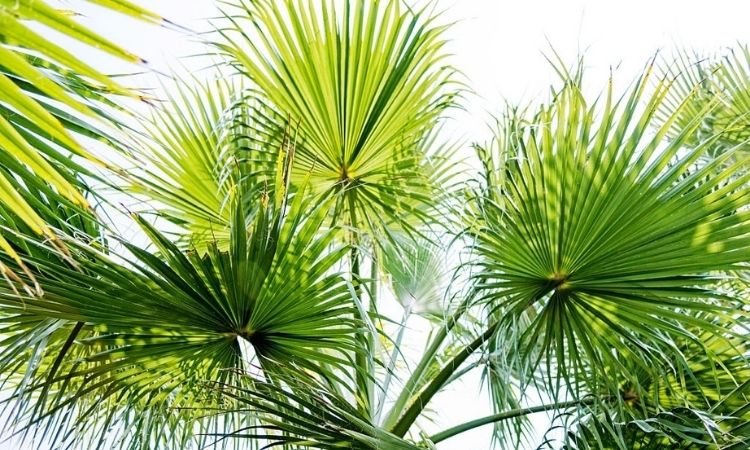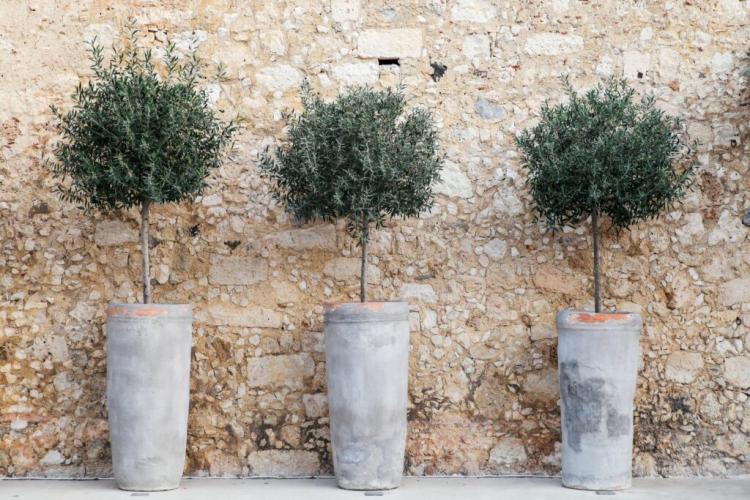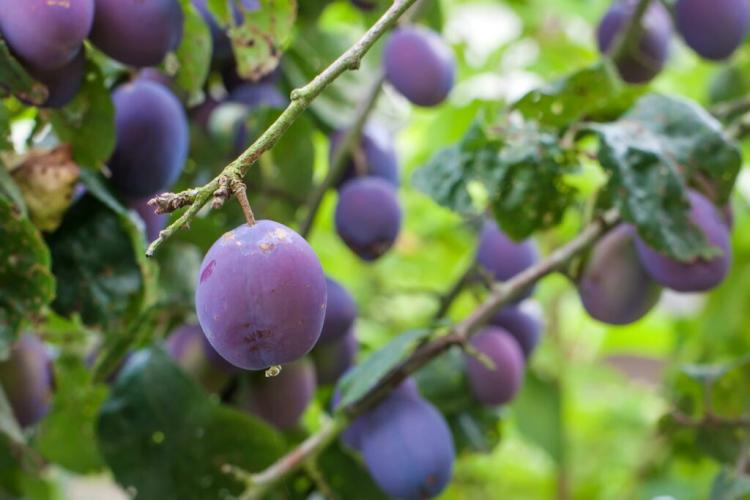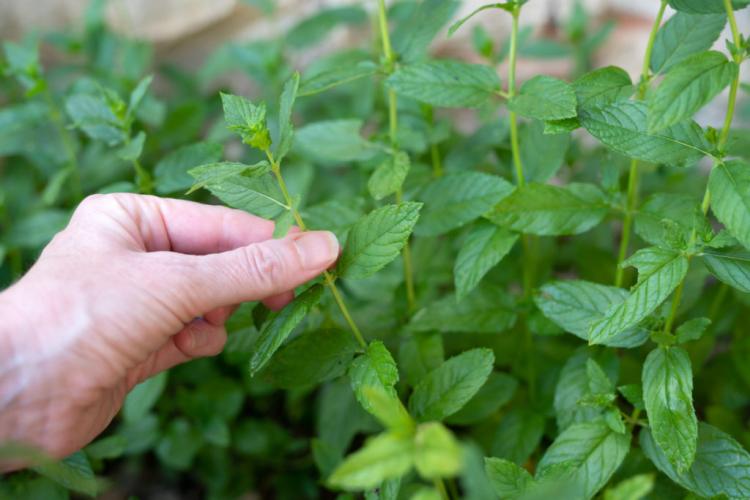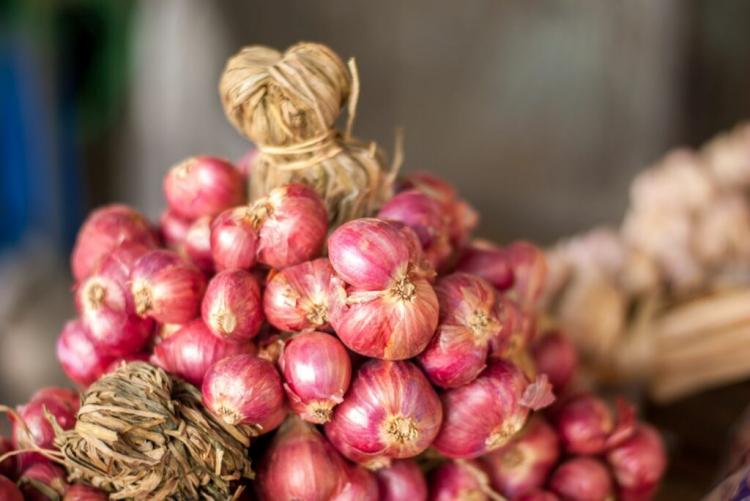Compost Bins: Tips To Buy And Use Correctly
Biowaste is collected in compost bins. Here you can find out which bucket is the best, what belongs in it, and what can be done with your waste. Some people only see leftovers in their organic waste that have to be collected and thrown away. Viewed holistically, however, these are resources: nutrients and carbon are contained in them and can be made usable again. This can be done at the recycling yard, on a compost heap, or even in your own kitchen.
The first step, however, is always to choose a compost bin and fill it correctly. To keep annoying flies away from your compost bin, we have collected a few tips. Finally, we briefly present two alternatives to normal disposal: the worm box and the Bokashi bucket.
Compost bins in the kitchen and household
Table of Contents
Small collecting bins can usually be used in the kitchen to collect waste for organic waste bins or composters. A simple container with a plastic lid is often sufficient. But of course, there are also the Ferraris and Rolls-Royces among the compost bins. We present some models to you below.
Enamelled compost bins with a large capacity and a wooden handle stand for longevity, a timeless design, and the fewest possible trips to the organic waste bin or the composter. When using a (compostable) garbage bag, there is hardly any ventilation, so that fermentation processes and the appearance of unpleasant-smelling liquids can occur inside – also because of the large volume of 20 liters. The price here is just over 20 euros.
Compost bins with dishwasher-safe plastic buckets go two steps further. Ventilation is made possible here by a perforated lid. There is an activated carbon filter behind the ventilation holes, which is supposed to filter the escaping air from odors. Cleaning is, therefore, easier and the development of odors – which can also attract fruit flies – is limited. Since the 5-liter plastic bucket has to fit in the dishwasher, the capacity is reduced compared to a simpler model. The price is just over 20 euros.
Perhaps a little less chic are simple plastic buckets with a lid and handle. They are available in different sizes and are also dishwasher-safe. The lid closes the bucket in such a way that no odors escape. Due to the exclusion of oxygen, fermentation processes can also occur here, which also produce foul-smelling liquids. According to the manufacturer, this bucket is sustainably manufactured and easily fully recyclable. Depending on the size, the price is between 8 and 12 euros.
There are also plastic buckets with ventilation and activated carbon filters. The advantages correspond to those of the enamel model presented above, only the look is different. Like the simple plastic bucket from Rotho presented above, this one is also sustainably produced and easily recyclable.
The most varied versions, designs, and sizes of all four options are available – there is sure to be a suitable model for every type of user. Much more important is perhaps the type of use: Emptying is sometimes unpleasant when old, stinking organic waste is stubbornly stuck in the corners and cracks of the container. There are three ways to solve this nasty problem:
- A biowaste container with a smooth interior and no corners: any contamination simply slides out or can at least be easily rinsed out with a little water.
- You can also use a garbage bag made from recyclable paper or plastic. Available paper bags are always made from recycled paper bags and never printed with toxic mineral inks that could harm the microorganisms in the compost.
- You can also line the bottom of your waste bin with recycled, unprinted paper. Even things printed in black can be composted, colored and shiny ones are better not. However, the use of paper and paper bags is only recommended for small containers with adequate ventilation: If the compost is left on for a longer period of time, the paper soaks and sticks to the walls of the container all the more firmly.
- Fermentation processes lead to the formation of sticky liquid and thus to the sticking of newspaper or waste in the bucket. The smaller and better ventilated your compost bin, the fewer fermentation processes take place and the less it sticks inside.
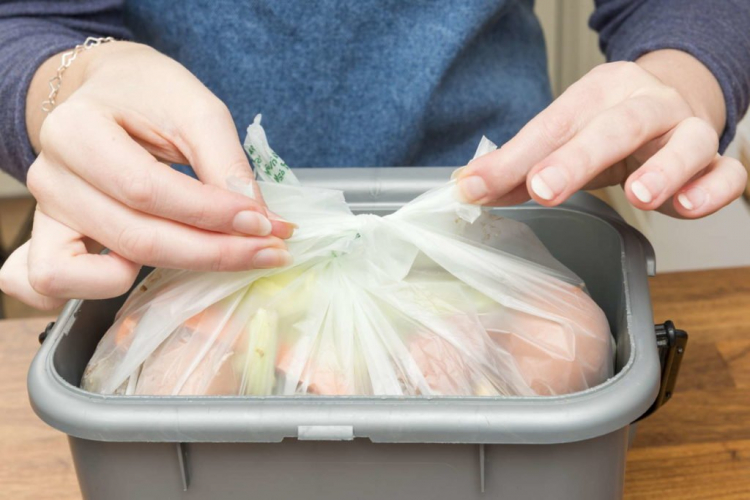
Summary of compost bins in the kitchen and household:
- Containers of various volumes are available in enamel or plastic and with or without lid ventilation.
- Aeration of the compost reduces the fermentation of the waste.
- An activated carbon filter integrated into the lid reduces odors and thus prevents fruit flies from being attracted.
- Small volumes reduce fermentation and make cleaning easier – for example in the dishwasher. Large volume means that emptying is less frequent.
- Smooth and round inner surfaces, the use of compost bags or newspaper, and small, well-ventilated compost bins prevent the contents from sticking in the bucket.
Compost bin: what belongs in it?
The Federal Ministry for the Environment, Nature Conservation, Building and Nuclear Safety (BMUB) is responsible for the legal regulation of waste management. However, there is no nationwide regulation on the content of the organic waste bin, because the local waste disposal company always has the final say when it comes to filling the organic waste bin. What seems unnecessarily cumbersome at first glance is ultimately due to practice: Depending on the existing composting plant and technology at local recycling yards, there may be deviations from the general recommendations of the Ministry of the Environment.

The following usually belongs in the organic waste bin:
- Vegetable and fruit leftovers (also from citrus fruits)
- Salad leftovers (also with dressing)
- Coffee and tea residues, with bags – if without metal
- All dairy products – in smaller quantities (except milk)
- Bones (in normal household quantities)
- Eggshells
- Nutshells
- Wilted bouquets and potted plants with soil (without ties or metal)
- Shrub and tree pruning, bark, and twigs
- Lawn clippings
- Perennials (plastic tie must be removed)
- Wild herbs
- moss
As a rule, this does not belong in the organic waste bin:
- Packaging scraps
- Broken glass
- Stones and clay
- Plastic and metal foils
The following is treated differently depending on the district:
- Small animal litter
- Cooked, salted
- Leftover meat and large quantities of dairy products
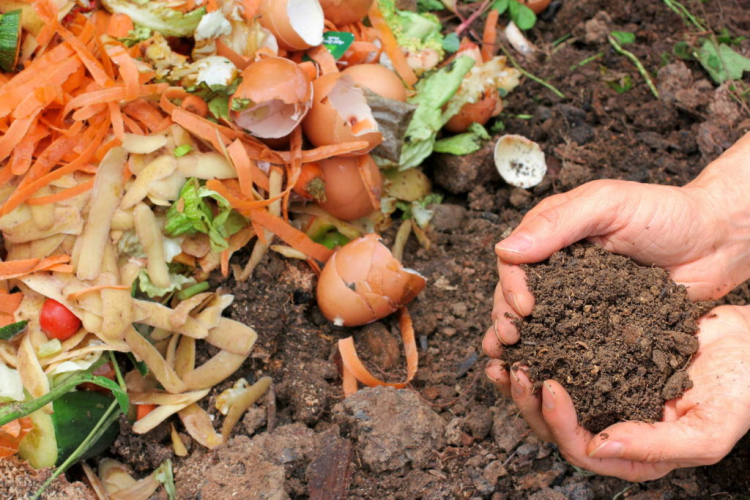
Disposal on your own compost heap
Imagine that you don’t need an organic waste bin, that transport routes are saved, and that you have compost at a top price: for free – not including your own sweat and work. Waste disposal through composting in your own garden is the most ecological way of dealing with organic waste. However, since composting on the private compost heap takes place as a so-called “cold rotting” process, the compost material has to be separated somewhat differently. Weed seeds, plant diseases, and raw eggs, for example, shouldn’t get on your compost. You can find everything else in the table below.
| Suitable Household waste |
Suitable garden waste | Unsuitable Waste |
|---|---|---|
| Fruit and vegetable scraps | Lawn / green clippings | Glass |
| Coffee and tea residues | leaves | Metals |
| Meatless leftovers | Hedge/branch pruning | Root weeds |
| Peel of citrus fruits and bananas (to a small extent) | Seed weeds without seeds; Sawdust and wood shavings, provided that they are made of untreated wood |
Large quantities of dairy products |
| Pure wood ash | Plant residues such as Perennial clippings or crop residues |
Shells of raw eggs |
| Bowls of boiled eggs | Roots and soil from old planters | Vacuum cleaner bags |
| Dust, hair, fingernails | Ties and bags made of natural material (jute, hemp) | Paper or cardboard that is printed in colors or with a glossy finish |
| Small animal litter, provided that it is made of untreated wood | Mineral soil (sand, clay, silt, stones) | Plastic sheets or non-degradable garbage bags |
| Black printed, non-glossy recycled paper | moss | Plant residues from diseased plants |
Compost bin: preventing and fighting flies
Especially in summer and in rural areas, they can become a real nuisance: fruit flies, vinegar flies, or fruit flies. The troublemakers are drawn to the smell of the compost and fruit and try to break into our four walls. Especially the small members of the Drosophilidae family (fruit flies) known as fruit flies can be very annoying. They use ripe, injured, or fermenting fruits to lay their eggs – and these are often found in the compost bin. We have collected tips for prevention and control. You can also find more detailed information on controlling fruit flies in our special article.
Preventive measures against fruit flies
- Keep your compost closed or use a container with an integrated filter.
- Flyscreens in front of the windows prevent flies from entering from the outside.
- Ventilate as often as possible to expel the ripening gases from your home, which attract fruit flies. It is best to do this at night when the flies are inactive.
- Only buy fruit that has been fly-free in the store. Otherwise, the females have probably already laid eggs on the shell of the fruit so that they can get into your kitchen. Wash purchased fruit.
- Fruit can usually be stored in the refrigerator or, better still, in a cool, closed storage room.
- Bring compost, waste glass, empties, and also the yellow sack outside more often in spring and summer – this way the appetizing gases develop less strongly.
- Keep your kitchen particularly clean: The sensitive sensory organs of the fruit flies can perceive smells rising from work surfaces or fruit bowls standing around.
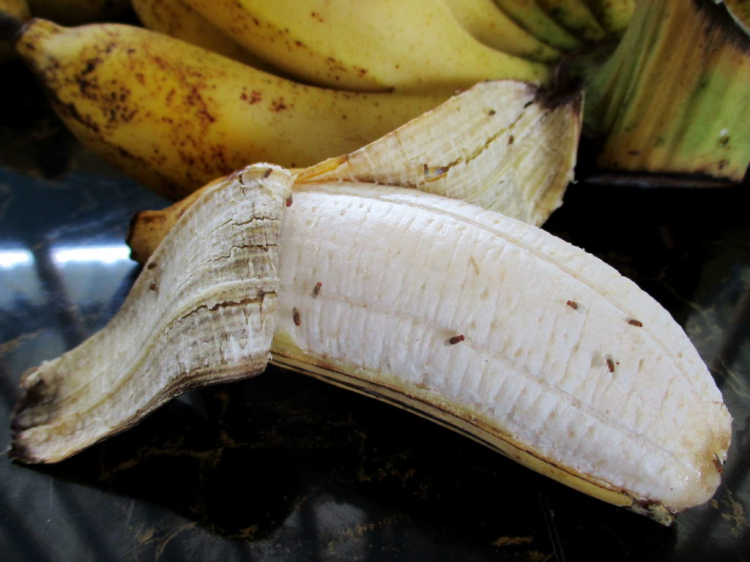
Measures to control fruit flies
- Cleaning the affected room – surfaces, floors, and trash cans should be empty and clean.
- Removal or thorough washing of fruit to which the fruit fly eggs may still adhere. These are preferably placed in soft places, hollows, and stems.
- Thorough ventilation (with fly screens or at night) and subsequent setting up of lure traps that contain vinegar, wine, fruit juice, or erythritol. In 2014, a scientific experiment demonstrated that the sweetener erythritol, which is well tolerated by humans, not only acts as an attractant on fruit flies but also reliably kills them. You can read more about the effects of erythritol here.
- You can also consider setting up trap plants: the common fat leaf ( Pinguicula Vulgaris ) attracts all sorts of insects and digests them on its sticky leaf rosette. However, the location should have a high level of humidity, which is why cultivation in a humid indoor greenhouse is recommended.
Composter in the house: produce compost without a garden?
Instead of filling a waste bin, you can also recycle your organic waste in your kitchen. This saves you walking, provides you with valuable fertilizer, and is also an option in a city apartment without a garden.
Worm box as a composter
In a worm box, so-called worm compost is produced from your biobafall with the help of special compost worms and other typical compost inhabitants. This is very rich in nutrients and therefore corresponds most closely to fresh organic compost. With a little manual skill, worm boxes can be put together by yourself, but there are also many different models available for purchase. A well “run-in” worm box does not cause many inconveniences: the worms like it moist, room temperature should prevail and the compost material must be layered sufficiently loosely.
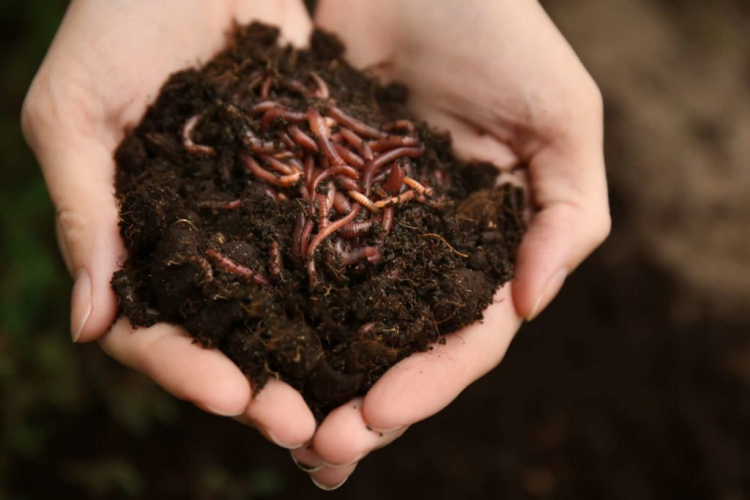
Bokashi as a composter
Bokashi buckets can also be operated in the apartment. Basically, it is only about large buckets that can be hermetically sealed and that have a tap at the bottom, from which the resulting liquid can be tapped as liquid fertilizer. The idea of Bokashi comes from Japan, where farmers used harvest waste to make the Bokashi product centuries ago.
In the Bokashi bucket, it is not decomposed and composted, but rather fermented: the otherwise undesirable fermentation processes are promoted in the absence of air. This is lactic acid fermentation, which is also used for the production of tasty cheese or sauerkraut and which produces finished bokashi within two to three weeks. Bokashi is soft and quickly decomposes in the bed or compost heap.


